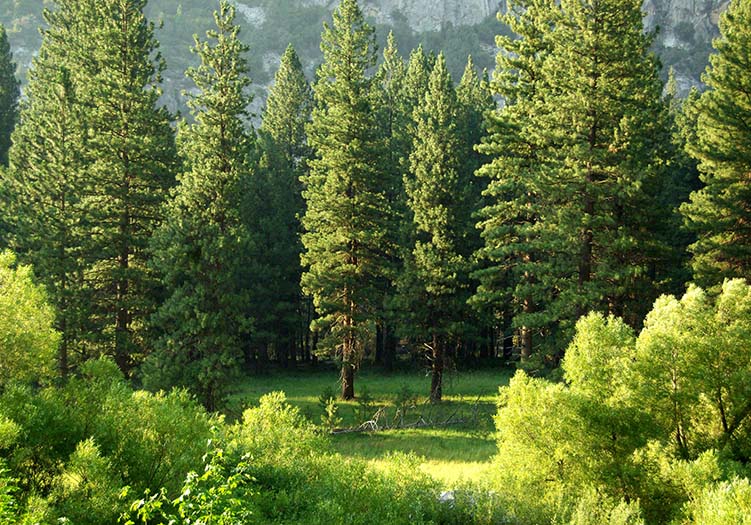Your shopping cart is currently empty.
| Subtotal | €0,00 |
| Shipping Rate | including VAT, excl. Shipping Rate |
| Total | €0,00 |
|---|
23.11.2020
Trees are incredible survivors and that is why we find them in a wide variety of environments - all over the world. A birch tree prefers the moist soil at the edge of a stream, where it thrives splendidly. But the birch can also grow stubbornly at dizzying heights on the crumbling joints of an old wall. In the following some information about the tree species in Germany.
The different trees in our German forests
If someone is in charge of the forest, it is the trees. If you go back in history, trees have already covered almost all of Germany. Germany is one of the most wooded countries in the European Union. With 11,4 million hectares it is almost a third of the total area is covered with forest.
But which tree species grow here and who dominates the forests?
We are now giving you a simple overview.
The spruce
It dominates the forests in Germany. The Spruce is very uncomplicated, undemanding and fast-growing. It is the most common tree species and bedeckt damit around 28,2 percent of the German forest area.
The only species native to Central Europe is that "Norway spruce"which is sometimes incorrectly referred to as the “spruce” because of its scaly, red-brown bark.
The Norway spruce comes naturally from us mainly in the Bergland in front. she has a high water requirements and tolerates a lot of shade. In the lowlands and on dry and warm locations in the mountains, it is particularly susceptible to the notorious bark beetles. You may not believe it because you think trees are always strong, but a storm can devastate pure spruce forests in a matter of hours. Why is that? Because the trees are right shallow roots and therefore simply have no chance against a storm.
The spruce is one of them Genus of the pine family. There are up to 35 species of the evergreen conifer. Growing spruce trees outside of their natural locations can also have a negative impact on the soil. The spruce grows fast and you Wood can be used in many ways. Their demand on the timber market is correspondingly high. How does the spruce differ from the fir? Spruce cones hang down from the branch, while pine cones grow upright.
We have a few more interesting points for you. With the Romans, the spruce was considered due to its strong growth Symbol of hope. When someone was killed or a memorial service was imminent, spruce branches were hung on the front door. The spruce was made in ancient Greece consecrated to the sea god Poseidon, because the wood of the spruce was often used to build ships.
The jaw
In dry regions, where it is too dry for the spruce, the pine tree likes it better. The pine can withstand freezing cold and is a very robust tree speciesthat has low nutrient requirements. Round 28,2 percent of the German forest area is covered by pine.
On the other hand, floods (for example along rivers) affect it. Like spruce, pine can have a negative impact on soil as its needles can contribute to soil acidification. Pine wood can also be used in many ways as construction and industrial wood.
The European beech
Cow 15% of the forest area in Germany are occupied by the common beech.
The European beech tolerates a lot of shade, so it would naturally dominate many forests in Germany. It can grow up under other tree species whose descendants then no longer find enough light in the shade of the beech. The European beech feels at home where it is not particularly damp or particularly dry. She also feels good up in the mountains. Due to climate change, however, the beech is in dire straits, because most parts of Germany are getting warmer and drier.
The Oak
We have two native oak species that English oak and the Sessile oak. Oak trees need one thing above all, namely light. That's why she, like many others tree species that need light, be displaced by the beech in the long run. We find them in nature where it is either too wet or too dry for the beech. The oak is an important tree species because it is at home for several hundred species of insects and therefore also has great ecological value.
Oaks grow relatively slowly and grow naturally mainly in mixed forests, for example together with other tree species such as hornbeam, linden, maple, birch and pine.
The larch
There is only one European conifer that loses its needles in winter. The European larch and it can only be found in the mountains. But there the larch growing rapidly and you Wood is highly valued as construction and furniture wood it is also found in many commercial forests in Germany. Under the conifers she has the hardest and heaviest wood. As a demanding light tree species, the larch must regularly be given space to grow. Otherwise it would naturally be displaced by other shade-friendly tree species. Which soil does the larch like? On fresh to moderately fresh, well-aerated soils she feels good.
The silver fir
The silver fir, like the larch, is actually a tree Mountain regions prefers. The silver fir has been used very heavily in the past centuries and has hardly been replanted. Smoke pollutants also added to it. The wood industry is therefore concentrating more on the spruce.
The silver fir has great potential in Construction and construction, because their wood does not have any resin passages and is therefore much more durable than the wood of the spruce. But the known one Wet core in the wood makes drying extremely difficult.
The fir is one Shade tree speciesSo she feels at home in mixed forests. With its existence, it increases the structural diversity in the forests and can thus also grow under dominant tree species and help to shape the future forest. Ideally, a good water supply in the ground be given, even if the silver fir can tolerate much more drought than the spruce. The fir tree is an important player when it comes to climate change. Because of her strong and deep roots and the greater drought and temperature tolerance it is considered as an important tree species for adaptation to climate change.
The most common trees are spruce, pine, common beech and oak
Based on Germany's total wooden floor area of 11.4 million hectares
| Forest tree species | Proportion of total wooden floor area | Area in hectares |
| Spruce | 25,38% | 2.763.219 |
| Kiefer | 22,31% | 2.429.623 |
| European beech | 15,43% | 1.680.072 |
| Oak | 10,38% | 1.129.706 |
| larch | 2,82% | 307.050 |
| Silver fir | 1,68% | 182.757 |
Source: National forest inventory
Do you want more tree knowledge?
That might interest you
Great idea, easy handling and everything from ordering to delivery.
Michael K.
















